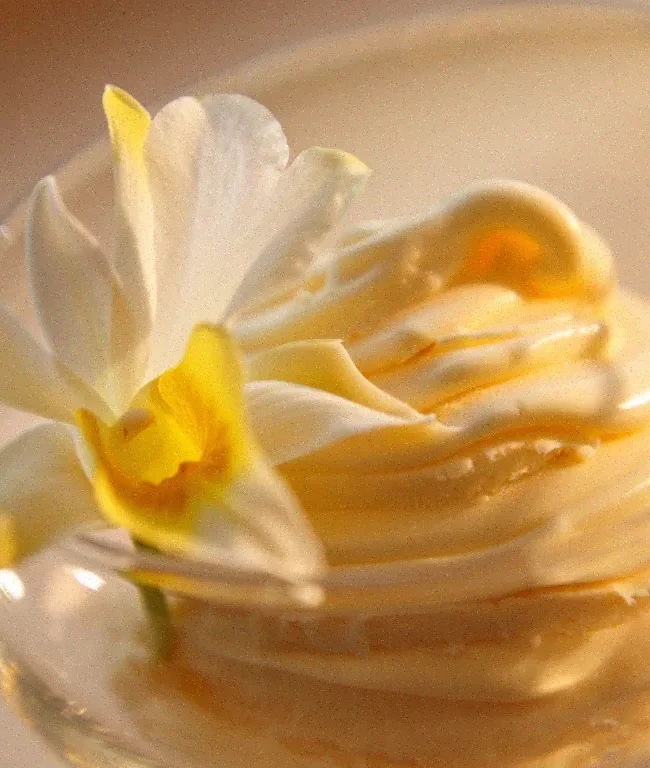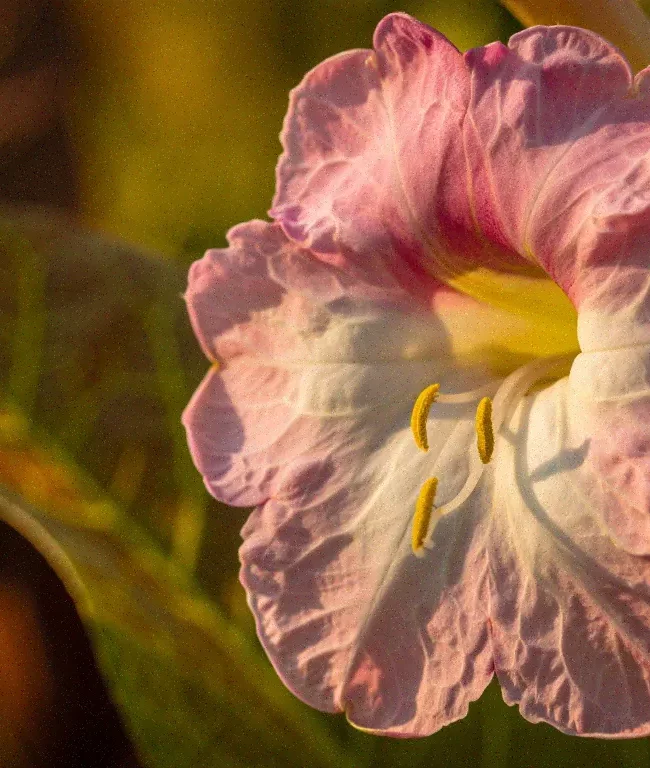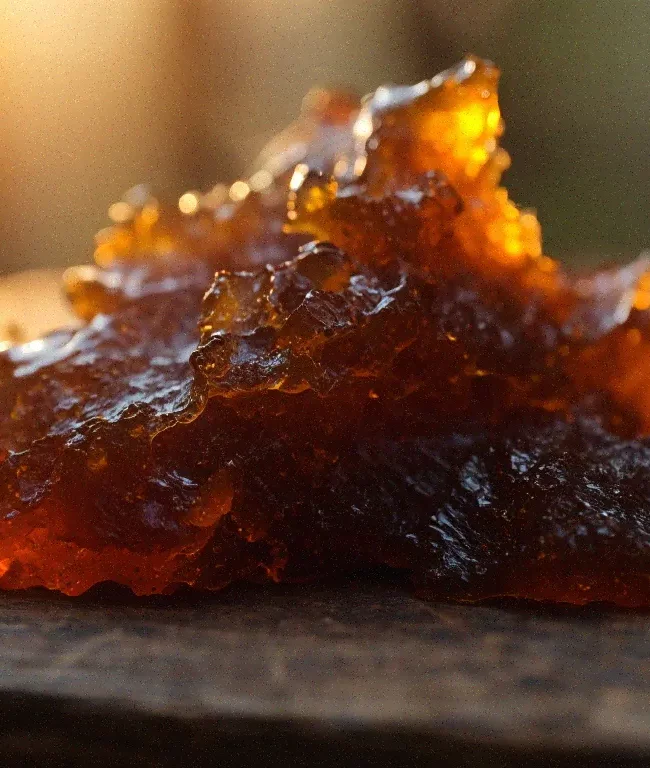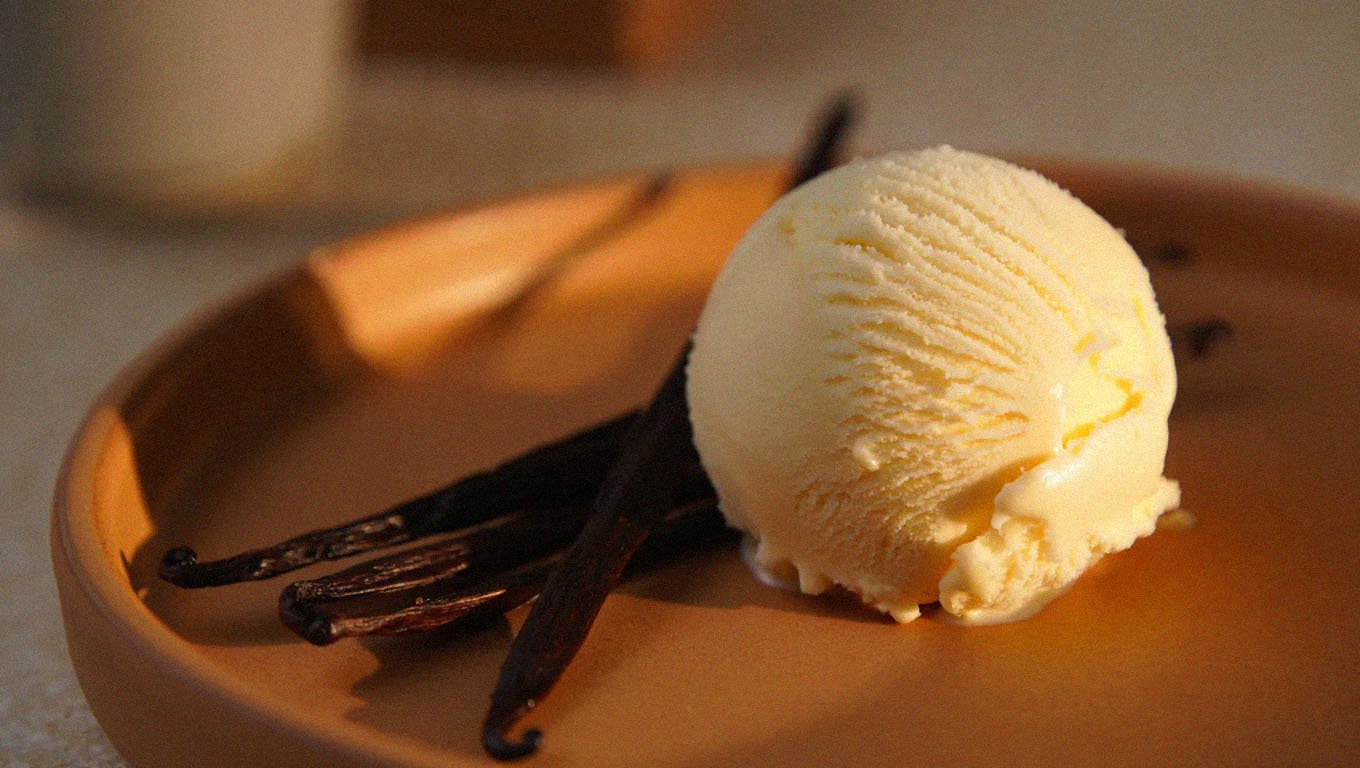
Gourmand Perfumery: Most Popular Fragrance Agents
Sweet and Familiar: Key Ingredients of Gourmand Perfumery
Gourmand perfumes are those that evoke the mouth-watering aromas of edible treats – from vanilla desserts to caramel candies. Perfumers achieve these delicious effects by using aroma molecules that smell like familiar foods or flavors. In this article, we’ll explore some of the most common and easily recognizable raw materials used in gourmand perfumery. These ingredients (often originally found in foods or flavorings) give perfumes their vanilla sweetness, sugary caramel warmth, jammy fruitiness, creamy coconut vibes, and spicy cinnamon kick. We’ll explain each material’s scent profile, why perfumers use it, how it contributes to a gourmand character, and how it compares to similar molecules. We’ll also see how perfumers combine these ingredients – like mixing a recipe – to create rich “edible” accords. A summary table at the end will compare the key properties of each molecule for quick reference.
Vanillin & Ethyl Vanillin – The Vanilla Sweetness
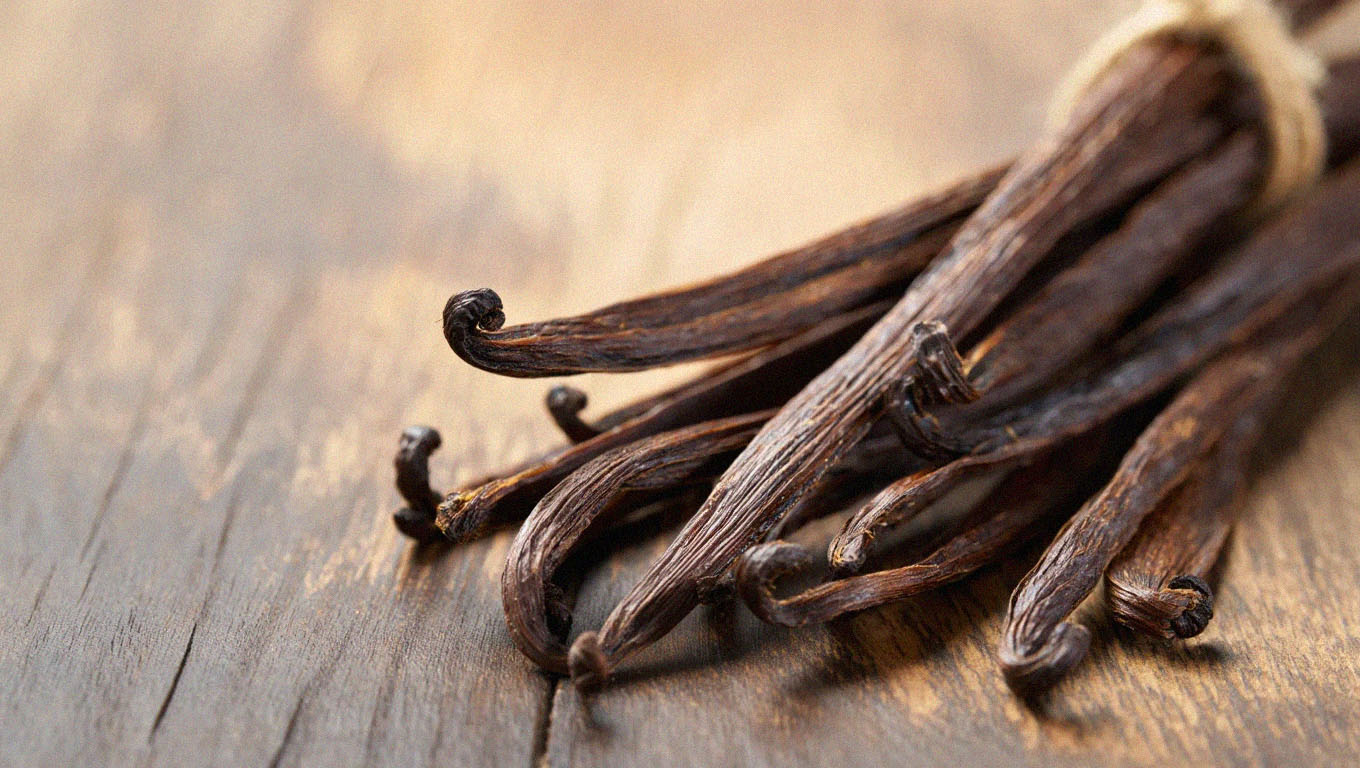 Vanillin is the cornerstone of vanilla flavor and scent. It’s the primary aroma compound in vanilla beans, responsible for that classic sweet, creamy vanilla smell we all recognize. In perfumery, vanillin is valued for its warm, rich, and comforting profile – often described as intensely sweet and creamy with a powdery warmth. At full strength it can have a slight “phenolic” or burnt sugar undertone (think of the dark, smoky facet in real vanilla extract). Even in tiny amounts, vanillin adds a long-lasting vanilla sweetness and acts as a fixative, helping to anchor and extend other notes. It’s extremely tenacious (lingering for hundreds of hours on a blotter) and is used across many fragrance types to impart a familiar gourmand warmth. Vanillin is so ubiquitous and affordable (it’s synthesized for both perfumes and flavors) that it has become the go-to ingredient whenever a perfumer wants a vanilla note.
Vanillin is the cornerstone of vanilla flavor and scent. It’s the primary aroma compound in vanilla beans, responsible for that classic sweet, creamy vanilla smell we all recognize. In perfumery, vanillin is valued for its warm, rich, and comforting profile – often described as intensely sweet and creamy with a powdery warmth. At full strength it can have a slight “phenolic” or burnt sugar undertone (think of the dark, smoky facet in real vanilla extract). Even in tiny amounts, vanillin adds a long-lasting vanilla sweetness and acts as a fixative, helping to anchor and extend other notes. It’s extremely tenacious (lingering for hundreds of hours on a blotter) and is used across many fragrance types to impart a familiar gourmand warmth. Vanillin is so ubiquitous and affordable (it’s synthesized for both perfumes and flavors) that it has become the go-to ingredient whenever a perfumer wants a vanilla note.
Ethyl Vanillin is vanillin’s stronger sibling. Chemically similar (with an extra ethoxy group), ethyl vanillin smells like vanilla as well, but even sweeter and more potent – roughly 3–4 times the strength of regular vanillin. Its scent is a touch different: many describe ethyl vanillin as a “cleaner,” more intense vanilla with subtle chocolatey and caramel nuances. It lacks some of the heavier, phenolic undertone of natural vanillin, which means it can feel a bit more transparent or “bright” in a blend. Because of its sheer strength and sweetness, perfumers use ethyl vanillin in small amounts to boost vanilla accords without having to add a huge dose of vanillin (which can thicken or discolor a formula). In fact, a truly rich and creamy vanilla effect is often achieved by combining both vanillin and ethyl vanillin: the ethyl vanillin provides intense sweet kick, while vanillin adds creamy depth and natural nuance. Together, this duo creates the luscious impression of vanilla bean ice cream, cake batter, or creamy custard in many gourmand fragrances. In short: vanillin gives the authentic vanilla warmth, and ethyl vanillin supercharges it – a bit like using both vanilla extract and a touch of vanilla flavoring to enrich a dessert.
Coumarin – Tonka Bean’s Sweet Hay Note
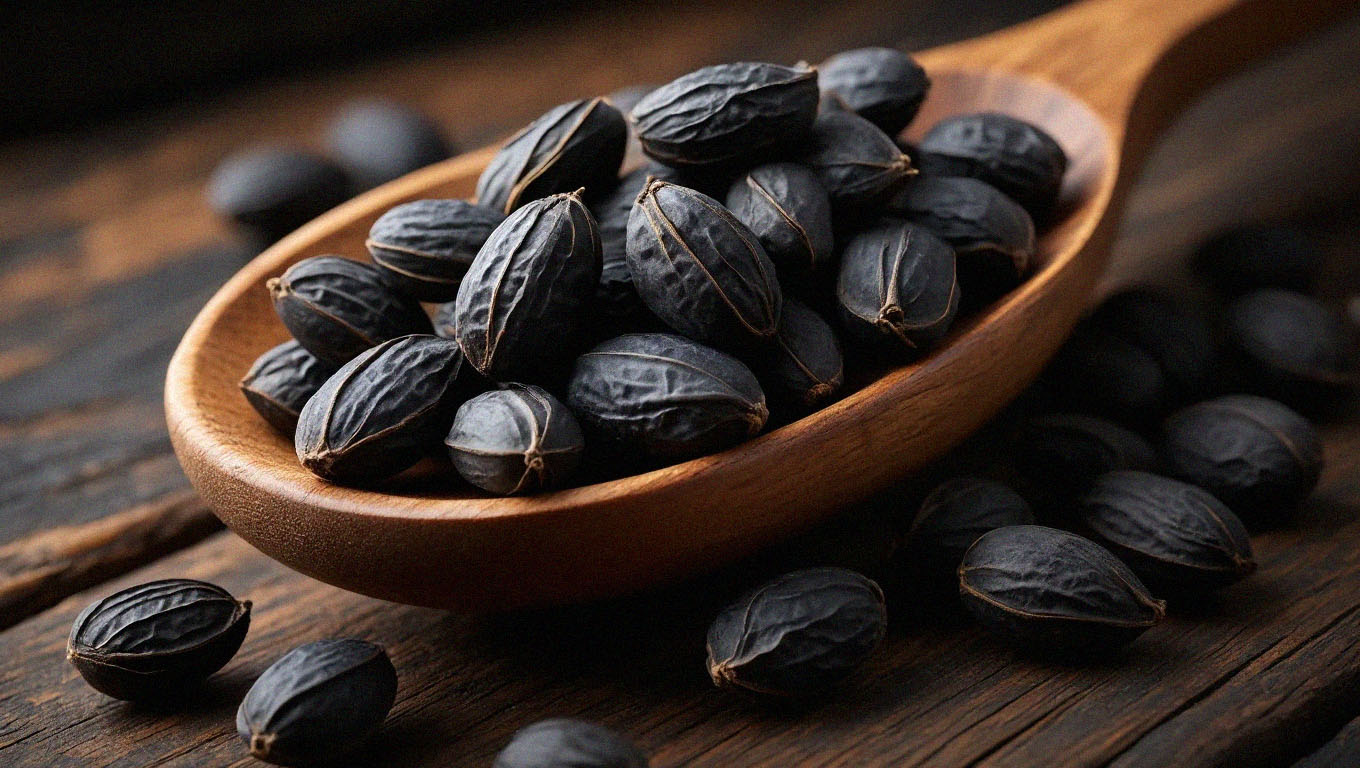 Coumarin is an aroma molecule best known as the key component of tonka beans (the seeds of the Dipteryx tree). If you’ve smelled tonka bean in perfumes, you’ll recognize coumarin’s scent: a sweet, almond-like, and freshly-mown hay aroma with hints of warm herbaceous spice. In fact, tonka beans are about half composed of coumarin, which crystallizes on their surface during curing and gives them a delicious odor reminiscent of vanilla, almond, and a touch of cinnamon/clove. Coumarin by itself has a powdery-sweet, hay-like scent with an almondy warmth. Some describe it as the smell of sweet dried grass or even the cozy note of pipe tobacco, and it’s indeed responsible for the classic “new-mown hay” scent.
Coumarin is an aroma molecule best known as the key component of tonka beans (the seeds of the Dipteryx tree). If you’ve smelled tonka bean in perfumes, you’ll recognize coumarin’s scent: a sweet, almond-like, and freshly-mown hay aroma with hints of warm herbaceous spice. In fact, tonka beans are about half composed of coumarin, which crystallizes on their surface during curing and gives them a delicious odor reminiscent of vanilla, almond, and a touch of cinnamon/clove. Coumarin by itself has a powdery-sweet, hay-like scent with an almondy warmth. Some describe it as the smell of sweet dried grass or even the cozy note of pipe tobacco, and it’s indeed responsible for the classic “new-mown hay” scent.
In perfumery, coumarin has been used for over a century (it was one of the first synthetic fragrance ingredients). It provides a warm, sweet base note that adds volume and depth. Importantly for gourmands, coumarin’s familiar sweetness has a comforting edible character – it’s not sugary like caramel, but more like a soft vanilla-almond nuance. Perfumers often pair coumarin (tonka) with vanilla materials to enrich the vanilla accord: tonka bean + vanilla creates a rich and creamy accord that is both sweet and sophisticated. The vanilla brings the dessert-like sweetness, while coumarin adds that toasty, slightly nutty warmth (imagine a touch of almond or brown sugar in the vanilla). This combination forms the backbone of many gourmand bases. Coumarin also blends beautifully with spices – for example, tonka with cinnamon can enhance spicy dessert accords. In an oriental-gourmand fragrance, coumarin might harmonize with clove, cinnamon, or cacao notes to suggest the aroma of spiced cookies or warm tonka-infused vanilla pastries. Overall, coumarin contributes a familiar “baked” sweetness and a cozy warmth that makes a fragrance feel edible yet elegant.
Maltol & Ethyl Maltol – Caramel and Cotton Candy
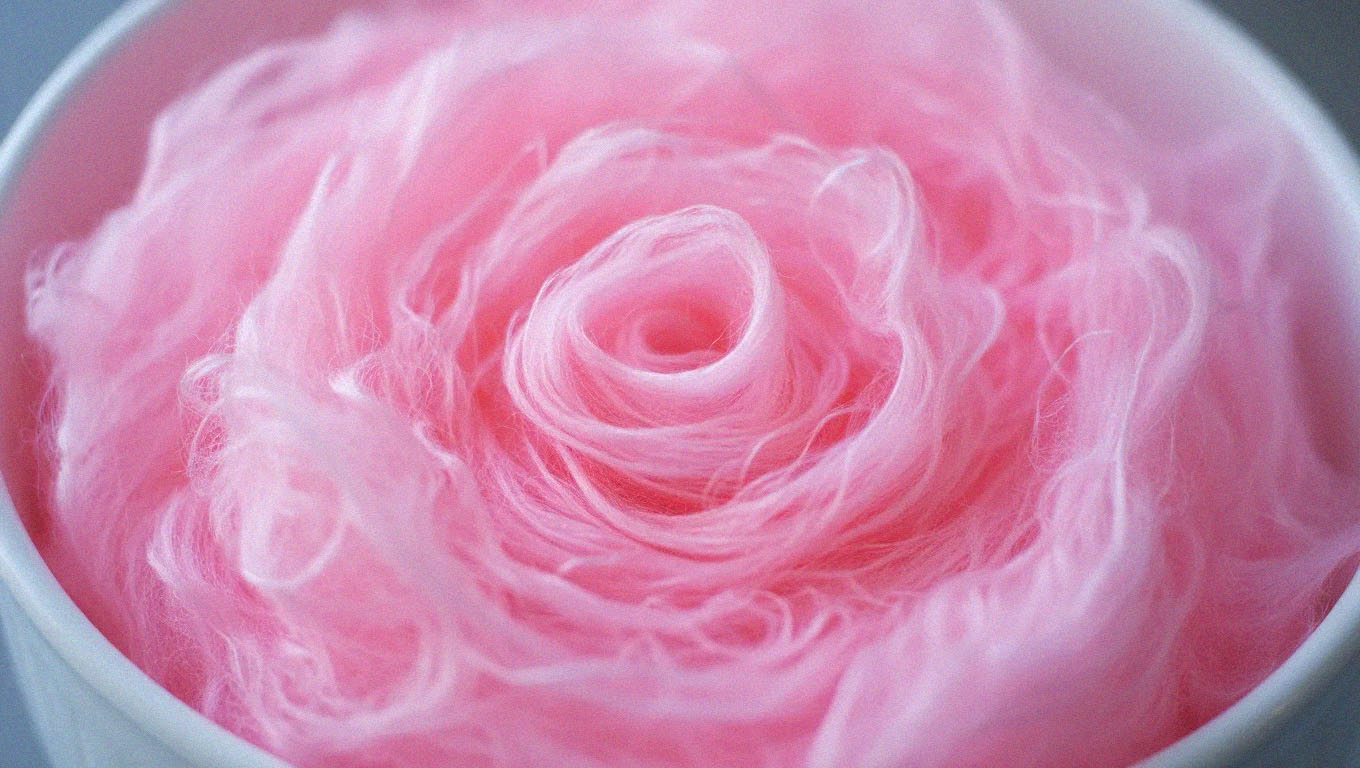 Sometimes called the “sweet tooth” of perfumery, Maltol and Ethyl Maltol are two closely related molecules that bring caramelized sugar goodness into a scent. These are the secret to those caramel, candy floss, and sugary notes in perfumes.
Sometimes called the “sweet tooth” of perfumery, Maltol and Ethyl Maltol are two closely related molecules that bring caramelized sugar goodness into a scent. These are the secret to those caramel, candy floss, and sugary notes in perfumes.
Maltol is found naturally in many toasted or cooked foods – it was first discovered in roasted malt (hence the name), and it occurs in caramelized sugar, baked bread, and even pine needles and cocoa. Its smell is that of warm caramel with a fruity twist. In perfumery terms, maltol’s odor is described as intensely sweet, warm, and caramellic, evoking sugar syrup, cotton candy, and a hint of toasted fruit. Some people get a note of strawberry or pineapple jam from maltol in dilution, alongside the obvious cooked sugar scent. Essentially, think of the aroma when you melt sugar or smell cotton candy – that’s maltol. It’s an incredibly strong sweetener in perfumes: even a tiny pinch can “sweeten” a whole bouquet, smoothing harsh edges and adding a yummy caramelized warmth. Perfumers use maltol in low doses to round off compositions with a touch of confectionary sweetness, or in higher doses to form an actual cotton-candy or caramel note. It gives an immediate gourmand impression because it’s the same kind of sweetness we smell in desserts and candy. Maltol by itself smells more like natural caramel/burnt sugar – one source notes it “smells more natural and of caramel,” providing a softer, more cozy sugar note.
Ethyl Maltol is a close relative – essentially maltol’s bigger, even sweeter sibling (chemically it has an extra carbon, making it slightly heavier). Ethyl maltol has become iconic for the “cotton candy” note in modern perfumes. Its aroma is extremely sweet and sugary, with a strong candy-floss and caramel character and subtle fruity-jam facets. Many describe it as the smell of a carnival: burnt sugar, candy apples, and pink cotton candy all rolled into one. Ethyl maltol is significantly stronger and more intense than maltol – it has a lower odor threshold, meaning a minute amount will smell very powerful. In practice, perfumers learned about ethyl maltol’s impact in the 1990s, when a famous perfume (the first major gourmand) used a bold dose to create a cotton-candy caramel aura. Since then, ethyl maltol has been used in many sweet perfumes, sometimes in even higher doses, to create that “sticky-sweet glue” of sugar that defines the gourmand genre. If a perfume notes list mentions “praline,” “caramel,” or “candy”, chances are it contains ethyl maltol (or maltol) to achieve that effect.
Maltol vs. Ethyl Maltol: These two are similar in scent, but perfumers note some differences. Maltol tends to smell like true caramel or lightly fruity sugar – a bit more natural and soft in character. Ethyl maltol smells stronger, sweeter, and more like spun sugar or candied fruit. In fact, ethyl maltol is often described as having a jammy strawberry or red fruit nuance along with the burnt sugar (imagine the aroma of strawberry cotton candy). Ethyl maltol’s sweetness is also more persistent and intense, which is why it’s so prominent in sweet perfumes of the last few decades. Perfumers often use them together for a layered effect: maltol to give a gentle caramelized coziness, and ethyl maltol to give an impactful cotton-candy pop. Both materials are typically used in the heart and base of a fragrance (they last quite well, especially ethyl maltol which can stick around on blotters for weeks). They literally supply the “sugar” in a gourmand recipe – from crunchy caramel brittles to airy candy floss. For example, a perfume accord for a caramel fudge might use maltol and ethyl maltol alongside vanilla, while a praline (caramelized nut) accord might pair ethyl maltol’s burnt sugar with an almond or hazelnut note. These sweeteners are indispensable for creating edible illusions in perfumery, as they instantly cue our brains to think of sweets.
Raspberry Ketone – Jammy Berry Sweetness
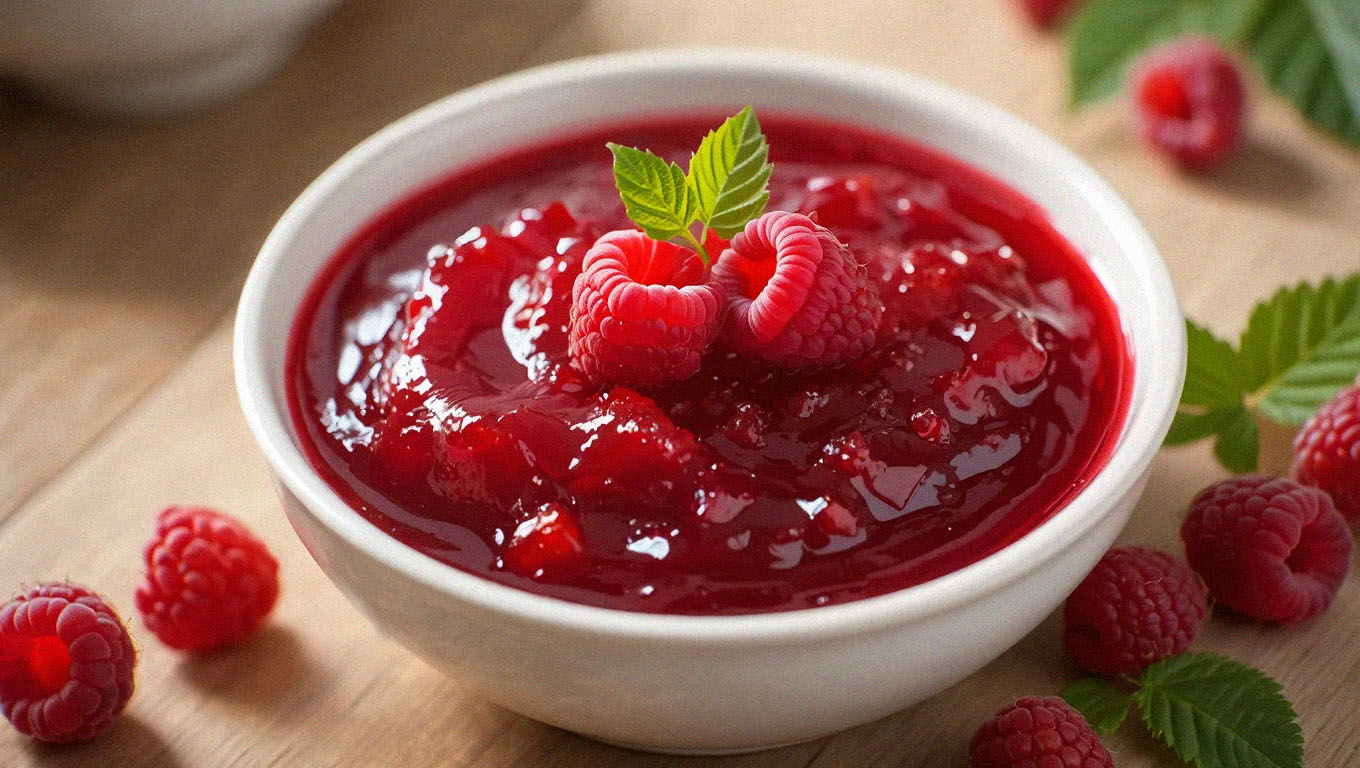 Not all gourmand ingredients are about vanilla or sugar – some bring fruity sweetness. Raspberry Ketone (also known as frambinone) is a popular aromatic compound in both the flavor and fragrance world, known for its ripe raspberry aroma. If you’ve ever had raspberry candy or smelled raspberry syrup, you have an idea of this note. Raspberry ketone occurs naturally in raspberries (though in tiny amounts), and it’s used as a flavor additive to give foods a fruity berry smell. In perfumery, raspberry ketone is prized for its sweet, jam-like berry scent that has a very natural, gourmand feel. Its odor is often described as warm, fruity, and reminiscent of raspberry preserves or candy, sometimes with a slight floral or woody undertone. Think of the smell of raspberry jam cooking with sugar – that’s the vibe this molecule brings: rich, red-fruit sweetness.
Not all gourmand ingredients are about vanilla or sugar – some bring fruity sweetness. Raspberry Ketone (also known as frambinone) is a popular aromatic compound in both the flavor and fragrance world, known for its ripe raspberry aroma. If you’ve ever had raspberry candy or smelled raspberry syrup, you have an idea of this note. Raspberry ketone occurs naturally in raspberries (though in tiny amounts), and it’s used as a flavor additive to give foods a fruity berry smell. In perfumery, raspberry ketone is prized for its sweet, jam-like berry scent that has a very natural, gourmand feel. Its odor is often described as warm, fruity, and reminiscent of raspberry preserves or candy, sometimes with a slight floral or woody undertone. Think of the smell of raspberry jam cooking with sugar – that’s the vibe this molecule brings: rich, red-fruit sweetness.
One interesting aspect of raspberry ketone is that by itself it’s not extremely strong – it has a subtle fragrance in isolation (it’s a crystalline solid with high molecular weight). But it has great tenacity (lasting power) and works wonders in mixtures. Perfumers use raspberry ketone in traces to “tint” a composition with berry sweetness or to reinforce a fruit note without making it sharp. It’s especially valued for creating realistic fruit accords – for instance, a strawberry jam note or a red berry compote effect – because it gives that cooked-fruit depth that many fresh fruity esters lack. In gourmand perfumes, raspberry ketone contributes a luscious “berry jam” character, making a scent smell like berry-infused syrup or a fruity candy filling.
Importantly, raspberry ketone is known to blend exceptionally well with vanilla and caramel-like notes. In both flavor and fragrance literature, it’s noted that this molecule forms “especially harmonious odor mixtures with vanilla, candy, and balsamic notes”. In practice, perfumers often pair raspberry ketone with vanillin/ethyl vanillin and maltol/ethyl maltol to create a full-bodied dessert impression. For example, imagine a raspberry vanilla cupcake accord: the raspberry ketone provides the red fruit jamminess, vanillin adds creamy sweetness, and ethyl maltol adds sugary depth – together yielding a delicious berry-and-cream aroma. Another common use is to put a touch of raspberry ketone in white florals or amber bases for a “fruity sweetness” that doesn’t stand out as fruit, but gives a warm, inviting glow. In summary, raspberry ketone brings the familiar smell of raspberry candy or jam, contributing a playful, fruity gourmand touch.
Coconut Lactones – Creamy Coconut Notes
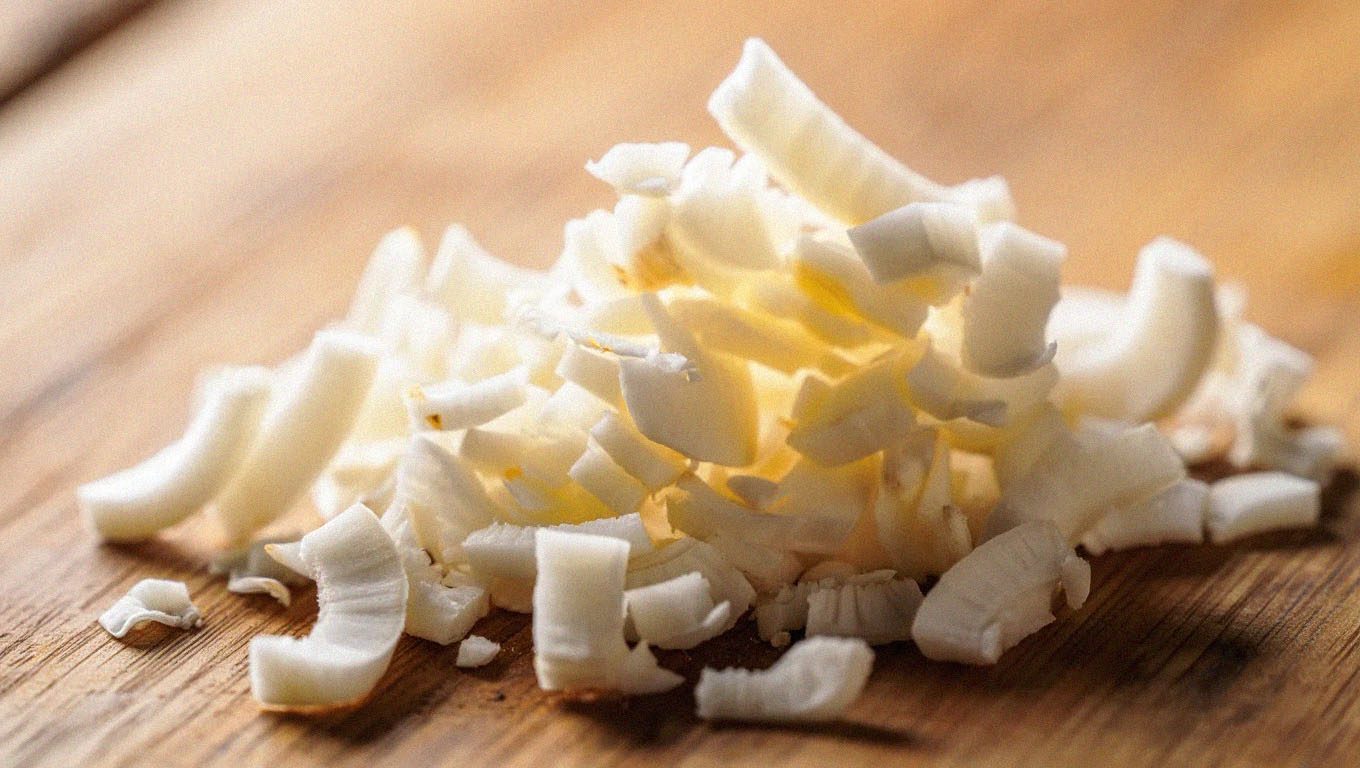 Few scents transport us to a tropical dessert paradise as quickly as coconut. In perfumery, the scent of coconut is primarily recreated with lactones, a group of creamy-smelling molecules. The most famous is Gamma-Nonalactone, often simply called “Coconut lactone,” which is the key compound that gives coconut its distinctive aroma. If you sniff pure gamma-nonalactone, you’ll instantly think of coconut milk or sweet coconut flakes – it’s that accurate. This molecule’s scent is described as richly coconut, with pronounced creamy, milky, and buttery facets. In other words, it doesn’t just smell like coconut water, but more like the whole creamy coconut flesh – luscious, fatty, and sweet, almost like coconut oil or coconut cream. There’s also a subtle waxy fruit nuance because many lactones have overlapping fruity-creaminess. Overall, coconut lactone smells tropical, sweet, and indulgently creamy, making it a perfect gourmand ingredient when you want a sunscreen-like coconut or a coconut dessert vibe.
Few scents transport us to a tropical dessert paradise as quickly as coconut. In perfumery, the scent of coconut is primarily recreated with lactones, a group of creamy-smelling molecules. The most famous is Gamma-Nonalactone, often simply called “Coconut lactone,” which is the key compound that gives coconut its distinctive aroma. If you sniff pure gamma-nonalactone, you’ll instantly think of coconut milk or sweet coconut flakes – it’s that accurate. This molecule’s scent is described as richly coconut, with pronounced creamy, milky, and buttery facets. In other words, it doesn’t just smell like coconut water, but more like the whole creamy coconut flesh – luscious, fatty, and sweet, almost like coconut oil or coconut cream. There’s also a subtle waxy fruit nuance because many lactones have overlapping fruity-creaminess. Overall, coconut lactone smells tropical, sweet, and indulgently creamy, making it a perfect gourmand ingredient when you want a sunscreen-like coconut or a coconut dessert vibe.
Perfumers use coconut lactones to create coconut accords and to add creaminess to blends. Gamma-nonalactone is very strong and long-lasting (it easily persists in the base of a perfume), so even a small amount will give a noticeable coconut aroma. It’s often combined with vanillic notes to suggest coconut custard or coconut vanilla cake, or with tropical fruit notes to enhance a pina colada feel. Because of its milky character, coconut lactone is also used just to impart creaminess – even when a perfume isn’t overtly coconut, a trace can make a floral note feel more like milkshake or add a silky vanilla-coconut undertone. Perfumers love that it blends well with sweet fruits, vanillas, and even flowers to enrich compositions with a smooth, sweet creaminess.
Cinnamic Aldehyde – Warm Cinnamon Spice
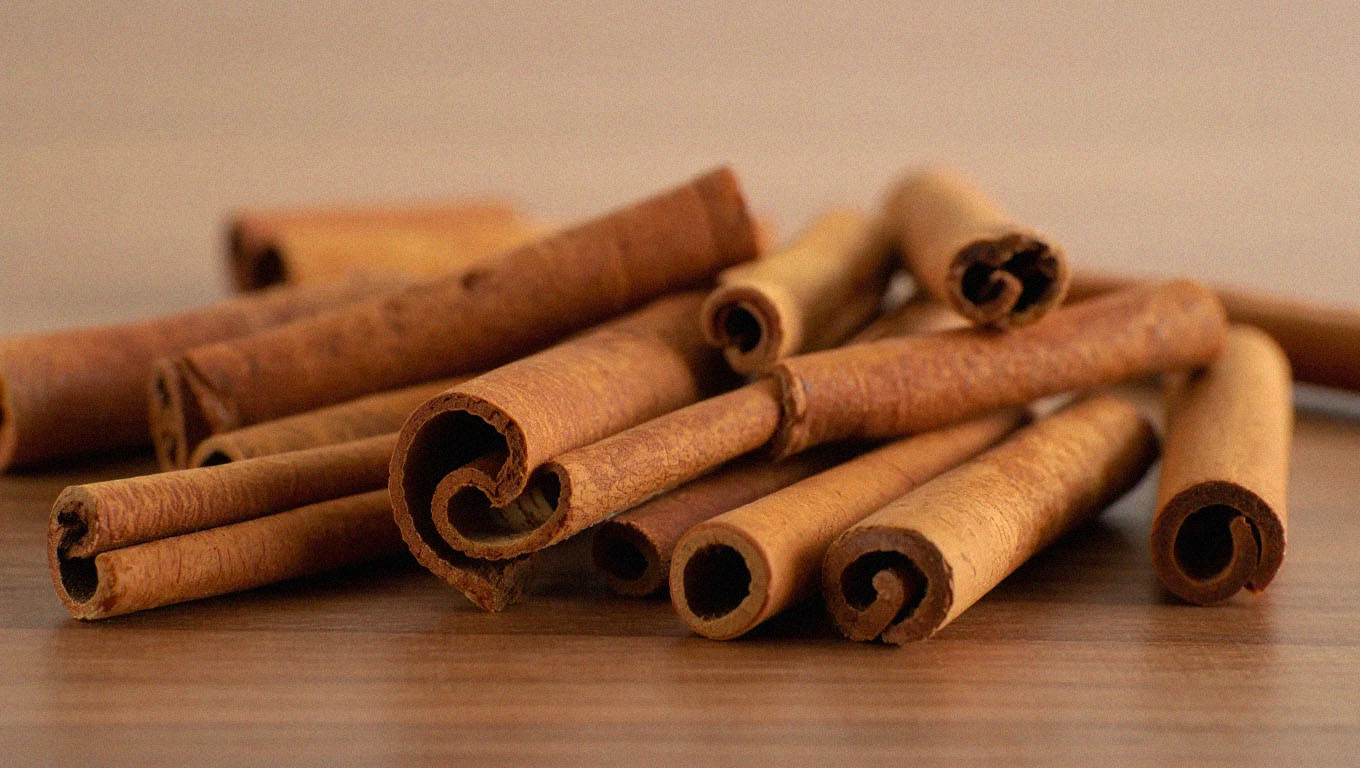 Gourmand fragrances aren’t only about sugars and creams – spices play a role too, especially cinnamon. The smell of cinnamon in perfumes usually comes from Cinnamic Aldehyde (also known as cinnamaldehyde), the chief aromatic in cinnamon bark. This molecule smells exactly like cinnamon sticks, and it’s what gives cinnamon spice and cinnamon oil their characteristic aroma. In its pure form, cinnamic aldehyde has a strong, sweet-spicy smell with a bit of a dry bite – basically the essence of cinnamon. Some descriptions note it has a slight “charred” facet or a whisper of smokiness, likely because at high concentration it can smell like the pungent, aromatic heat of cinnamon.
Gourmand fragrances aren’t only about sugars and creams – spices play a role too, especially cinnamon. The smell of cinnamon in perfumes usually comes from Cinnamic Aldehyde (also known as cinnamaldehyde), the chief aromatic in cinnamon bark. This molecule smells exactly like cinnamon sticks, and it’s what gives cinnamon spice and cinnamon oil their characteristic aroma. In its pure form, cinnamic aldehyde has a strong, sweet-spicy smell with a bit of a dry bite – basically the essence of cinnamon. Some descriptions note it has a slight “charred” facet or a whisper of smokiness, likely because at high concentration it can smell like the pungent, aromatic heat of cinnamon.
In perfumery, cinnamic aldehyde is used to impart spicy warmth and edible spice nuances. It’s a bit volatile, so its blast of cinnamon hits early, giving an immediate gourmand impression of baked cinnamon treats or mulled cider. However, because it can be overpowering and is a known skin irritant in high doses, perfumers use it carefully and often in combination with other notes. In a gourmand context, a small amount of cinnamic aldehyde can go a long way to suggest “holiday baking” or “spiced dessert”. Its most common partners are vanillin and coumarin, which together evoke cinnamon-sugar warmth reminiscent of cinnamon rolls or spiced cookies.
Combining Gourmand Ingredients in Perfumes
Just as a chef combines sugar, spice, and vanilla to bake a delicious dessert, perfumers layer these gourmand molecules to create complex flavors in fragrance form. Rarely does a gourmand perfume rely on a single ingredient; instead, multiple notes are blended to achieve a rich accord (the perfumer’s equivalent of a recipe). Below are a few illustrative examples of how these ingredients can work together:
- Creamy Vanilla Base: Vanillin + Ethyl Vanillin + Coumarin + Coconut Lactone – a lush vanilla custard accord.
- Caramel Praline Accord: Ethyl Maltol + Vanillin + Coumarin – a golden toffee/praline sweetness.
- Cinnamon Sugar Pastry: Cinnamic Aldehyde + Vanillin + Coumarin – evokes cinnamon buns or snickerdoodles.
- Berries & Cream: Raspberry Ketone + Ethyl Maltol + Vanillin – like raspberry ripple ice cream.
- Tropical Delight: Coconut Lactone + Vanillin + Ethyl Maltol – coconut macaroon or piña colada dessert vibe.
Perfumers adjust proportions and add supporting notes (musks, chocolate molecules, nutty aromatics) to perfect the balance. The core idea remains: by layering familiar edible notes, they concoct scents that tickle our taste memories as much as our sense of smell.
While we focused on these key molecules, others like benzaldehyde (almond), piperonal (vanilla-cherry), sotolone (maple syrup), and various furanones (strawberry jam) also enrich the gourmand palette. Yet vanillin, ethyl vanillin, coumarin, maltol, ethyl maltol, raspberry ketone, coconut lactone, and cinnamic aldehyde are the cornerstone building blocks that most often create the irresistible dessert-like aura we associate with gourmand fragrances.
Summary Table: Key Gourmand Aroma Molecules
| Ingredient | Scent Profile | Strength (Odor Intensity) | Longevity (Perfume Note) | Typical Use in Accords |
|---|---|---|---|---|
| Vanillin | Sweet, warm vanilla; creamy, powdery, slight “baked” facet. | High – strong even in low %. | Very long (base). | Core of vanilla accords; adds sweetness and depth. |
| Ethyl Vanillin | Intense sweet vanilla with cleaner candy edge; hint of chocolate/caramel. | Very High – 3–4× vanillin. | Very long (base). | Boosts vanilla; “vanilla candy” impact. |
| Coumarin | Sweet hay/tonka, almond, cut grass, powdery warmth. | Medium‑High. | Long (mid‑base). | Tonka/almond accords; cozy baked sweetness. |
| Maltol | Caramelized sugar, cotton candy, toasted fruit. | High – very sweet. | Moderate‑Long (heart‑base). | Caramel, candy floss, brown‑sugar warmth. |
| Ethyl Maltol | Extreme burnt‑sugar, cotton candy, jammy fruit. | Very High – extremely potent. | Long (heart‑base). | Praline/candy notes; intense sugary blast. |
| Raspberry Ketone | Jammy raspberry preserves, fruity candy. | Moderate. | Very long (base). | Berry accords; fruity sweetness with vanilla, caramel. |
| Coconut Lactone | Creamy coconut, milky, buttery, tropical. | High. | Long (base). | Coconut accords; adds creaminess to tropic gourmands. |
| Cinnamic Aldehyde | Spicy sweet cinnamon, warm, woody. | High – potent. | Short‑Medium (top‑heart). | Cinnamon spice in baked‑goods accords. |
Conclusion
Gourmand perfumery thrives on these familiar-smelling ingredients. By leveraging molecules we associate with delicious foods – vanilla, caramel, almonds, candy, fruit, coconut, cinnamon – perfumers create fragrances that comfort and delight with edible illusions. Each ingredient brings its own facet of yum, and together they allow perfumers to “cook up” scents that smell like desserts. Understanding these materials enriches your appreciation of sweet perfumes and reveals why gourmand fragrances feel like wearable confections.


